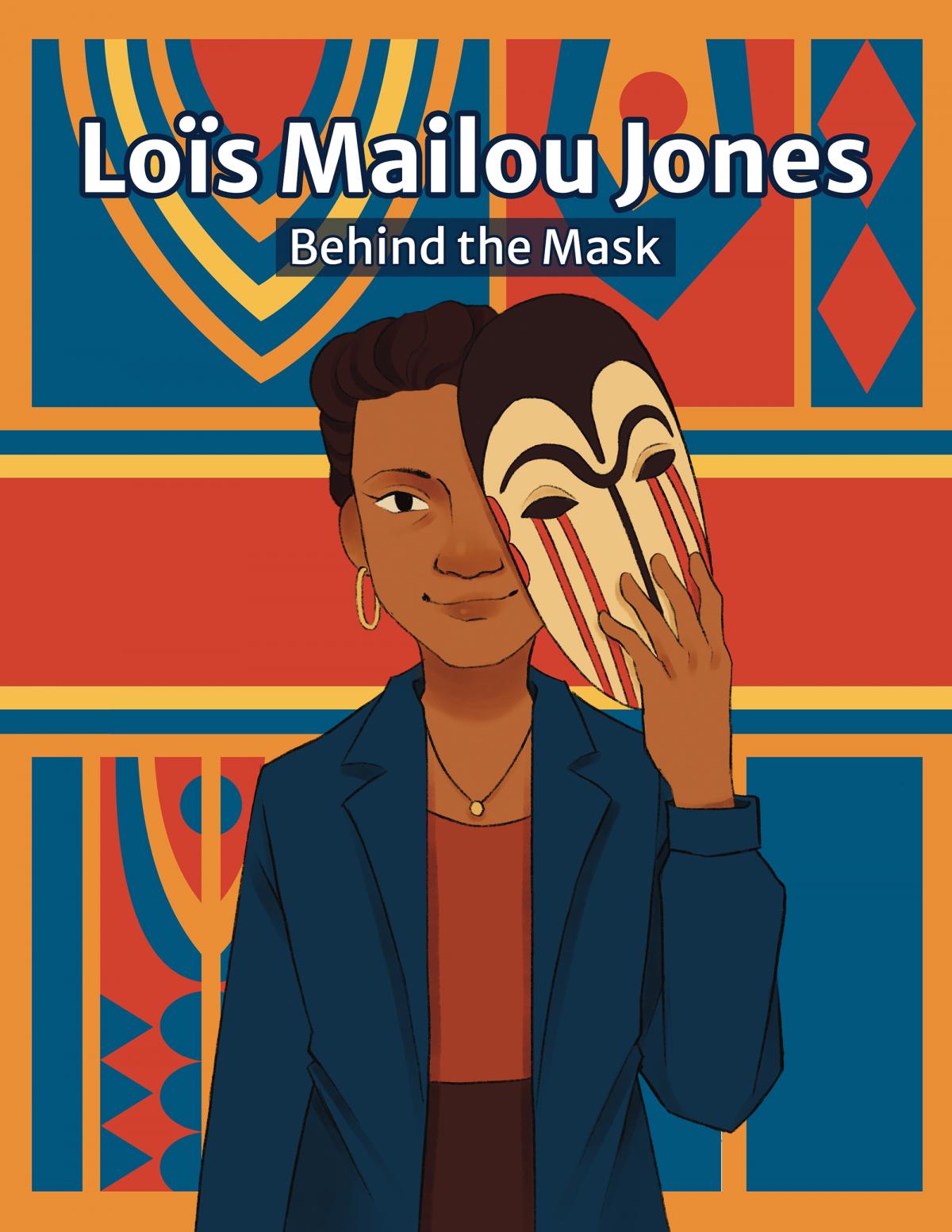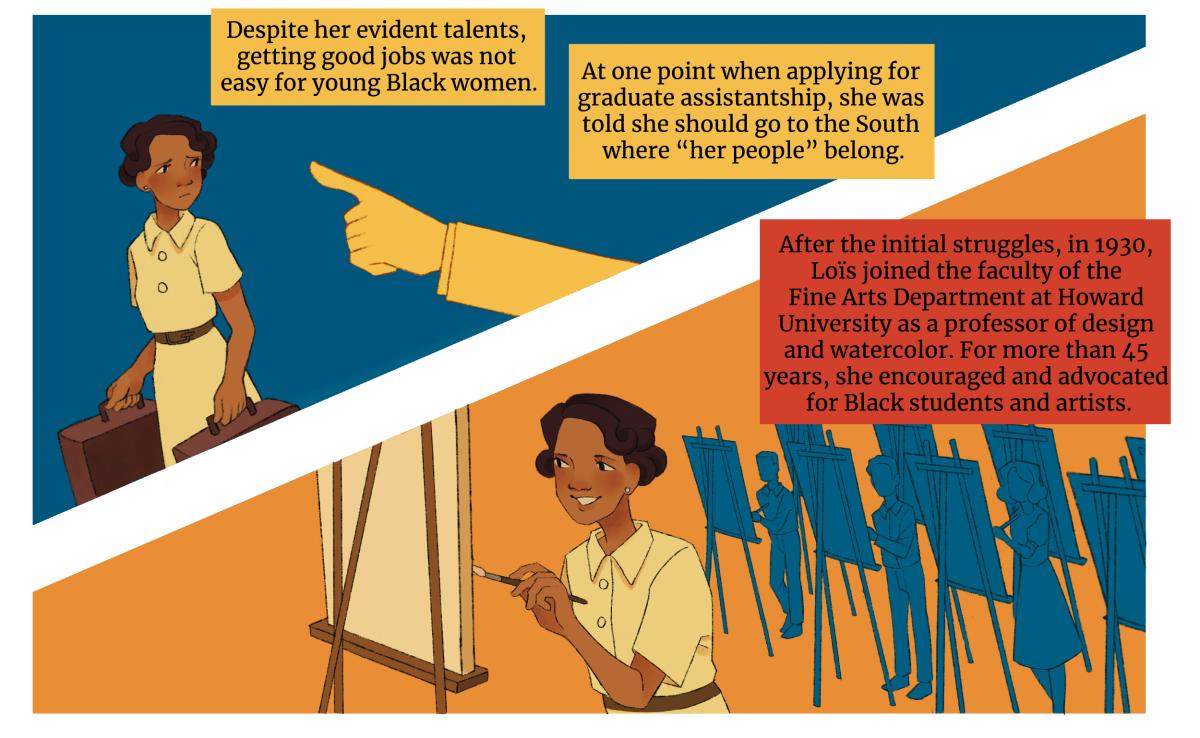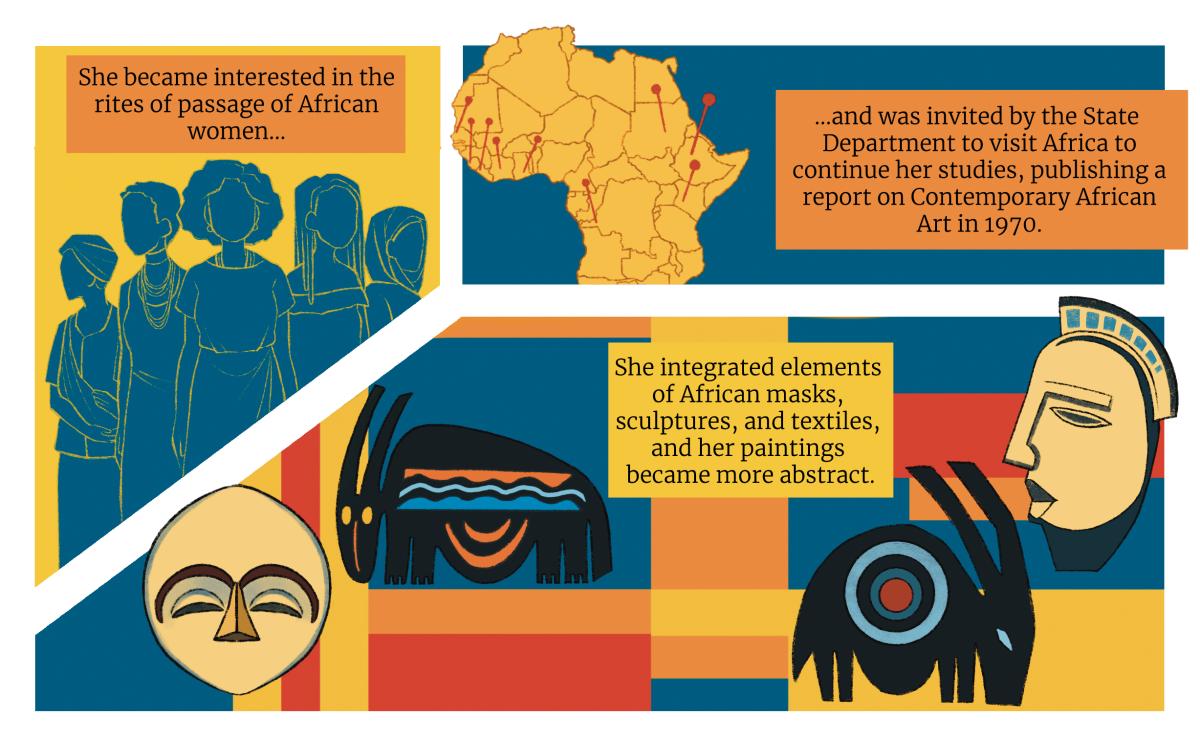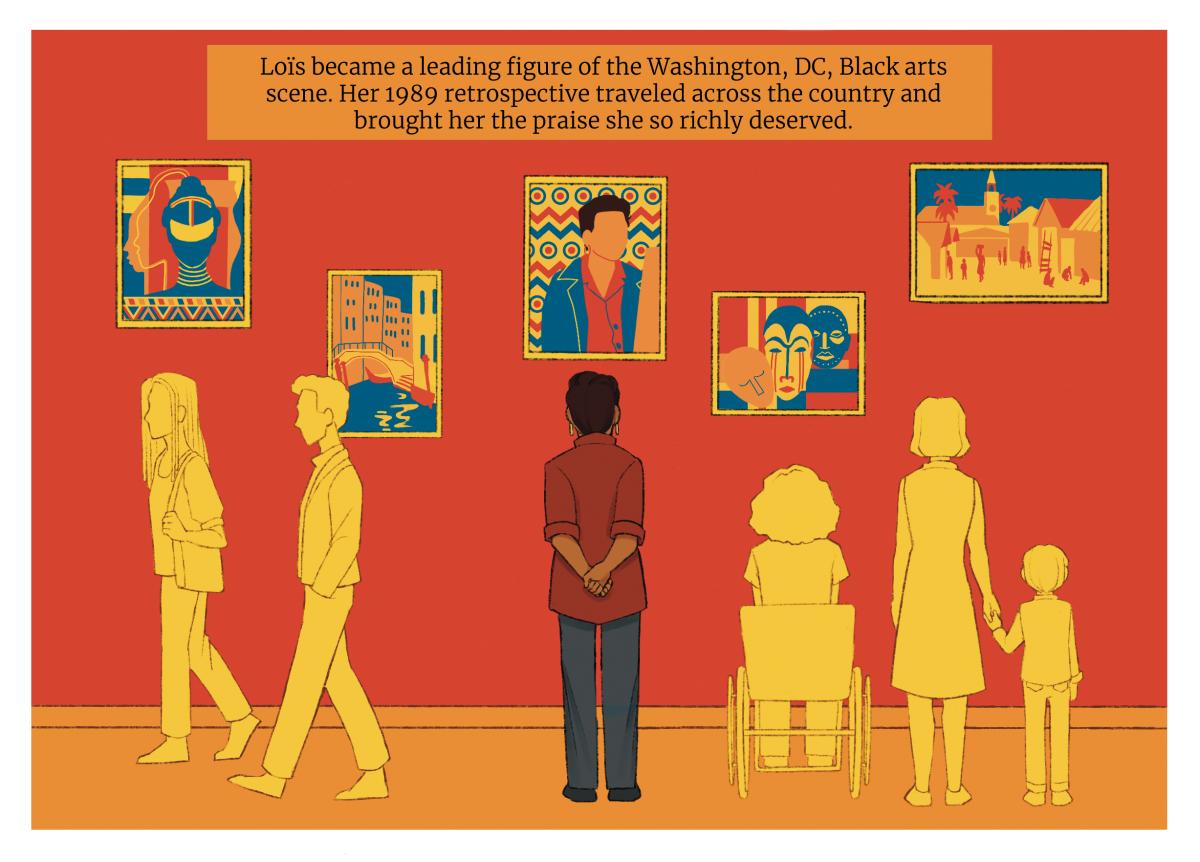
Loïs Mailou Jones was born in Boston in 1905 to parents who encouraged her painting and drawing. With their support, she attended the School of the Museum of Fine Arts, Boston, on scholarship before pursuing higher education at Howard University in Washington, DC, and Columbia University in New York, among others.
Despite her obvious talents, she struggled to begin her career at a time of acute racism. It was not easy for young Black women to find jobs. However, in 1930, she joined the faculty at Howard University as a professor of design and watercolor in the Fine Arts Department. She held the position for more than 45 years and became a strong advocate for Black students and artists.
Illustrator Aleyah Lyon, a student at the Ringling College of Art and Design, captures Jones’s story in a vivid palette of primary colors. The reds, blues, and yellows sing on every page and become a visual unifier that travels with the artist as she embarks on her impressive career, as well as important journeys to France, Haiti, and Africa, where between 1968 and 1970, she visited 11 countries on the continent. The cover illustration and title, “Behind the Mask,” speaks to Jones’s interest in Africa, especially in women’s lives. Jones would integrate elements of African masks and textiles into her work, as her paintings became more abstract. It is these elements that inspire Aleyah and propel the story forward.
“Behind the Mask” draws to a close with Jones’s 1989 retrospective, a beautifully illustrated scene of a large gallery wall filled with the artist’s paintings, with Jones standing in the middle of a group of people, all looking at the colorful paintings. The rich palette of primary colors is Aleyah’s warm, bold tribute to the artist who became a leading figure of the Black arts scene in Washington, DC.
On the final page, Aleyah portrays Jones standing proudly at an easel, her back again to the viewer. Well-traveled luggage and African masks sit at her feet—her life and her work have become one.
This comic is part of a series Drawn to Art: Tales of Inspiring Women Artists that illuminates the stories of women artists in the collection of the Smithsonian American Art Museum. Inspired by graphic novels, these short takes on artists’ lives were each drawn by a student-illustrator from the Ringling College of Art and Design.
We invite you to read the comic and share with your friends and young people in your life.





















